Beside the track, on the side that catches the sun, I spot my first primroses of 2025. Their faces are turned up to the weak, golden sunshine gleaming from a hazy sky. Nearby are a few lesser celandine, scattered yellow stars set against dark green, heart-shaped leaves. While a little white fleck catching my eye turns out to be a solitary barren strawberry flower, much smaller and hardier than the wild strawberries, which will flower later.
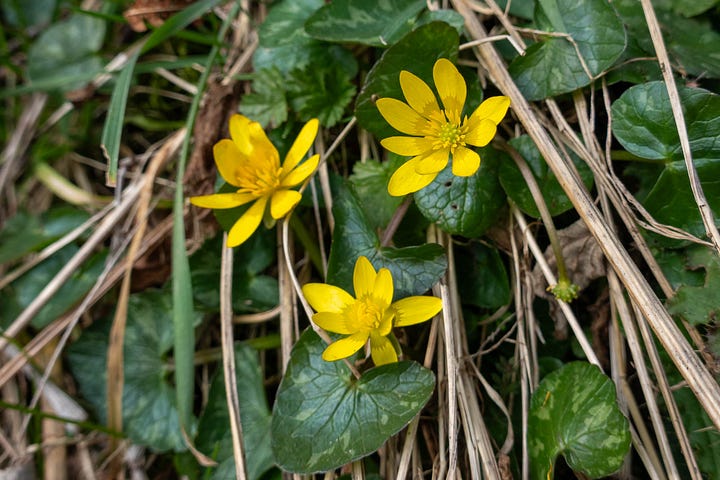
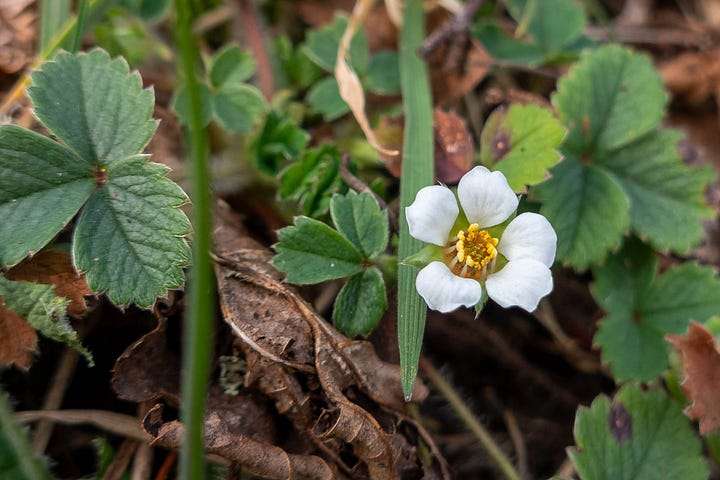
It is the Spring Equinox (March 20 this year) and we have come away to a special place that we are rewilding. (Rewilding is a contentious word, but it is useful shorthand for what we are doing here, giving the land a helping hand to return to nature).
In the north of Scotland, at the heart of the southern Highlands, spring comes later than in other parts of the UK. The ground looks dead, with bleached grasses and brown skeletons of thistles. Under the birches lies a thick mat of twigs, pruned from the trees by the winter winds. The hazel coppice is carpeted with curled, crunchy leaves, which have been swept into deep drifts by rainstorms rushing down through the rocks, leaving channels of bare soil.
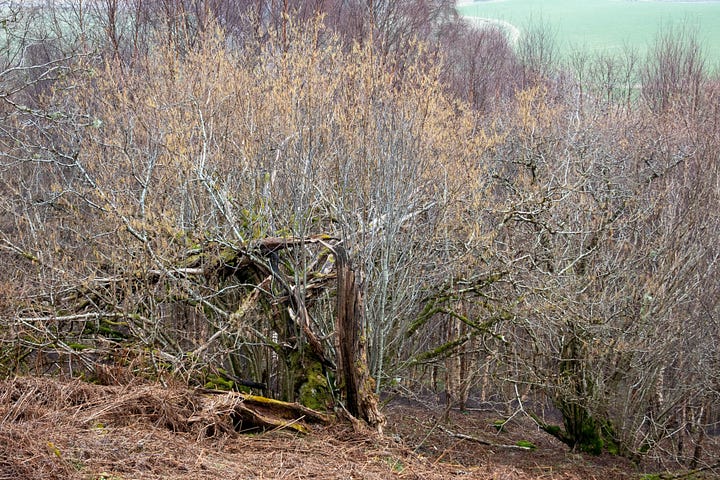
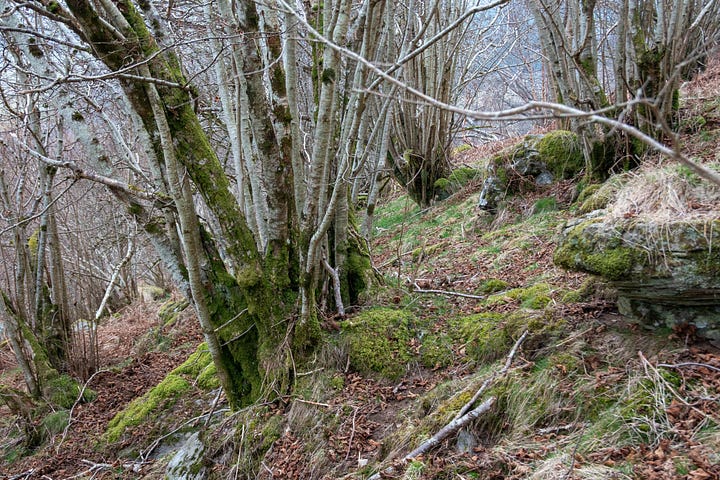
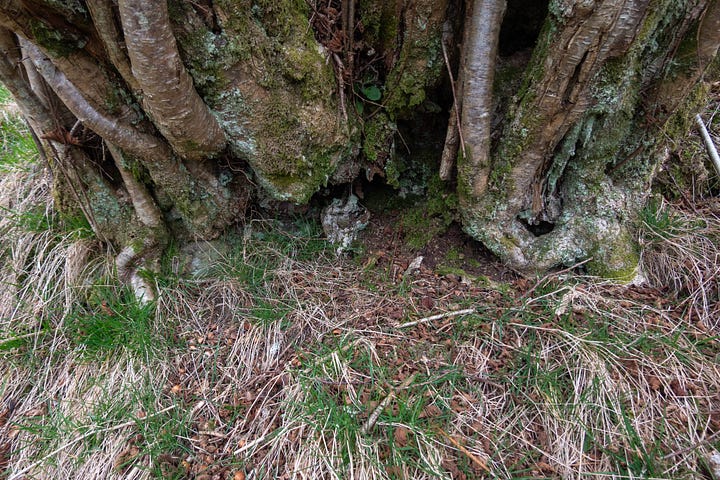
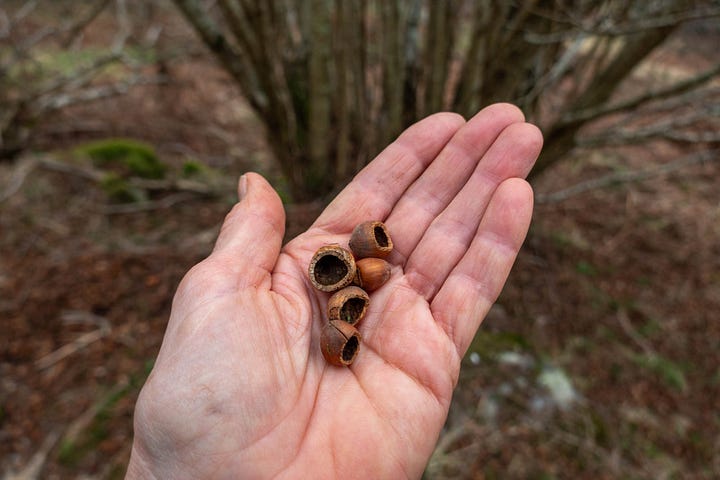
Although dry and apparently lifeless these old hazels are already awaking from their sleep. Their canopies carry a blur of yellow catkins, most open and shedding pollen. Looking closer, I find some of the tiny female flowers, which when fertilised will develop into clusters of hazel nuts. They look like miniature red anemones. It’s amazing that they can turn into food for jays, wood mice, red squirrels and us!

Higher up I come across a shocking sight. A notable landmark, a large elder with a massive domed canopy, is lying on its side, ripped from the soil and rock, with its roots still trying to keep a grip of the ground. It is surrounded by taller birch – why did it have to succumb?
It is one of the casualties of Storm Éowyn, which, in late January, brought the strongest and most damaging wind we have seen for a long time. On my tour I come across four more trees overcome by the strongest gusts.
Three of the felled trees are birch, two with some rot and these we will leave lying to feed the beetles, fungi and other organisms that make up this ecosystem. Another a bigger veteran downy birch has crossed a mossy stone wall and fence to block the path. I am sad to see its demise, especially as it won’t be easy to clear the multiple limbs blocking the way, but that is nothing compared to my distress later.
On the bottom corner, where three land holdings meet, I check on the ancient crab apple, which we reckon is probably about 300 years old and one of the largest in Scotland. It is densely covered in lichen, so from a distance it appears in leaf even in winter. This grey-green growth gives it extra surface area, making it more vulnerable to wind.
Seeing it at first through other trees I am reassured to see its upper part standing. But as I get a clearer view, something looks wrong – it is far too slim. The tree has a very fat bole and about one metre up divides. Two of the big trunks have fallen – one uphill and one downhill – leaving only one third of it upright. My heart is heavy at the sight, especially as I know how upset Andrew will be when I tell him.
The tragedy at losing veterans is partly offset by signs of new life emerging. Small birds are becoming more active and vocal: robin, long-tailed tits, redpoll, chaffinch, blackbird, mistle thrush, stonechat and a raven croaking overhead. The repeated calls of curlew drift uphill from the fields below. On my travels three woodcock burst from under my feet – they are probably on migration northwards.
The leafless trees allow sight of several bird’s nests being built. One little cup in the fork of a birch tree looks ready for use. Its sides are carefully woven together and it is lined with downy feathers. I wonder what species of bird built it?
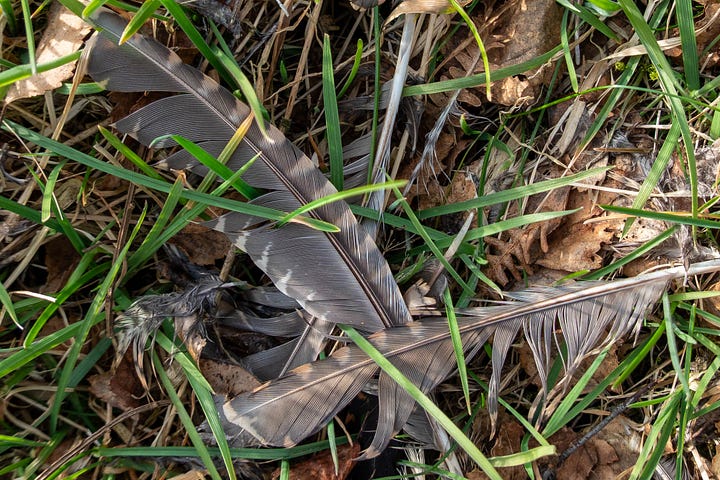
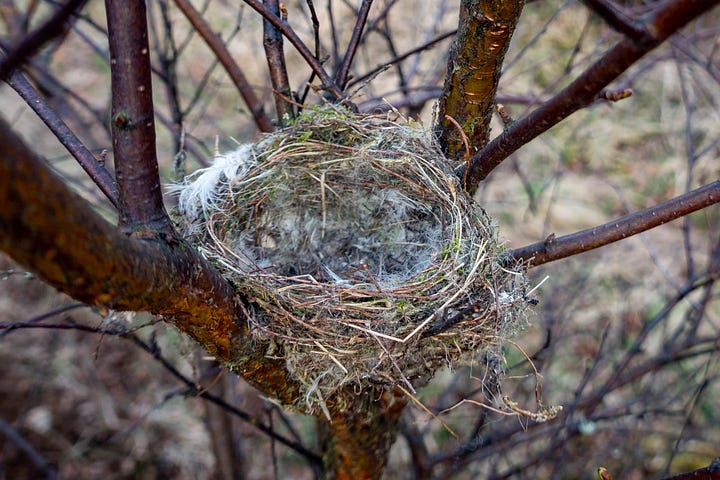
The next day we lug equipment up to the top of the wood to plant some trees. We are adding in some species that are missing, having been grazed out when this was part of a small farm with sheep, goats, cattle, horses, pigs and hens. This wood has been stock fenced for nearly thirty years and much natural regeneration has happened, but it is mainly birch, hazel and rowan, all of which have veteran trees to provide a seed source.
Over the past five years we have planted several species, including aspen which is the most palatable to deer and livestock, so relatively rare in this part of Scotland. They and the Scots pine, oak, birch and rowan have had to contend with ravages by three species of deer: resident roe deer, red deer from the forest above and occasional forays from fallow deer coming up the strath. The damage ranges from having their tops nipped out to whole trees and their tree guards being wrenched out of the ground. Nevertheless, many trees have survived and thrived.
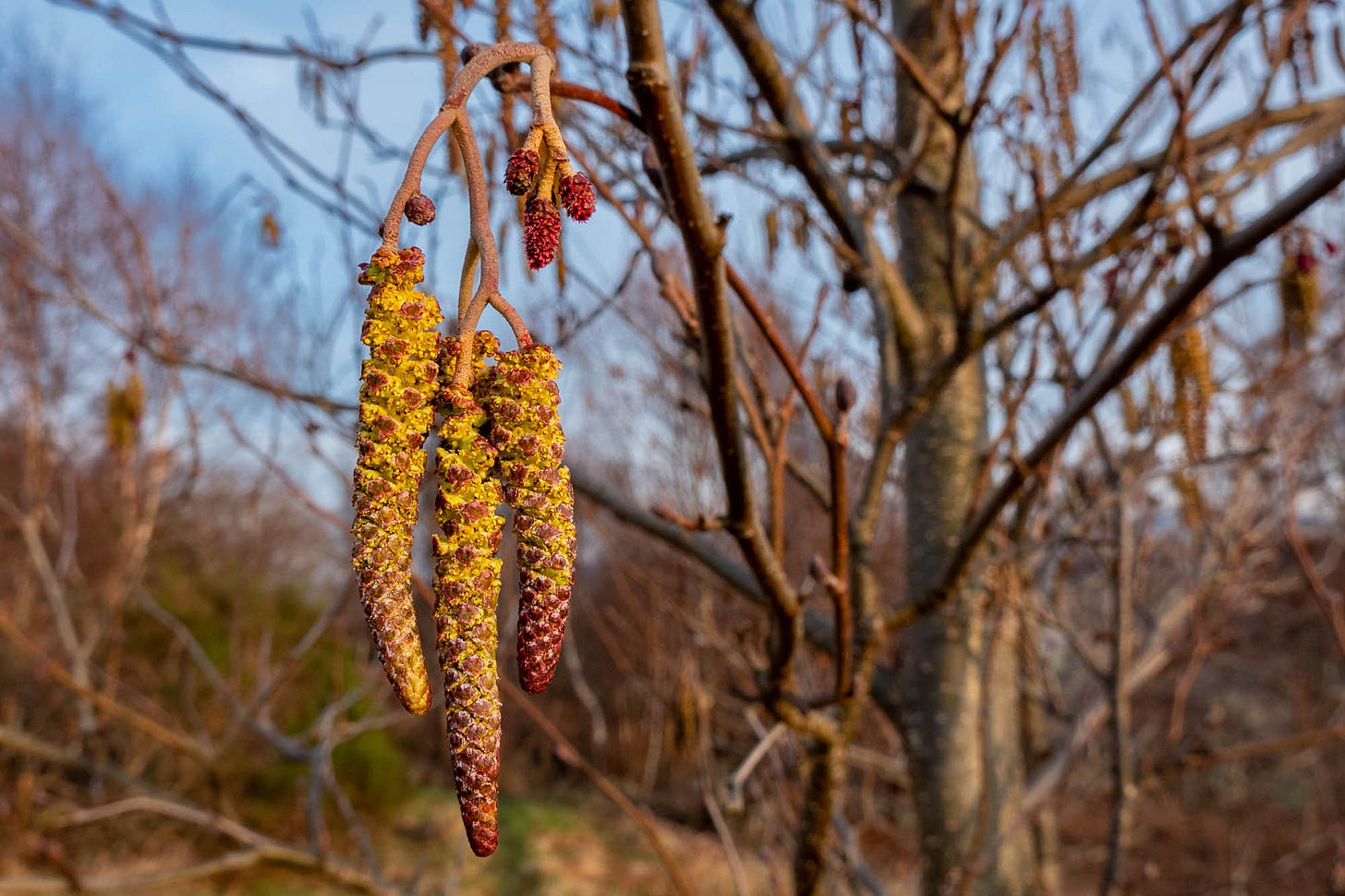
The alder, which are less attractive to grazing animals and tend to grow vigorously while young, have done extremely well and are now way above my head. They are currently decorated with dangling catkins, which were beautifully lit in the late afternoon sunshine. Most of the long, purple male catkins have opened and elongated to reveal their yellow interiors and to shed pollen. Above them, maroon-coloured little female flowers await fertilisation – they will form small green cones that will later turn brown and shed seeds. Already these trees are trying to spread their progeny and expand the woodland.
This time we are planting about 20 gean (wild cherry), so that their blossom can enliven the wood and their fruit provide more sustenance for birds and mammals. We work together, Andrew using his strength to break through the thick mat of grasses and bracken rhizomes to lift and turn squares of turf with me following. My task is to dig holes into the exposed soil and plant saplings, bedding each in with loose soil and the upturned turf. Then to protect every gean with a cane and spiral tree guard. The trees are barely half a metre (3 feet) high when we put them in the ground. I wonder how many years it will take for them to flower?
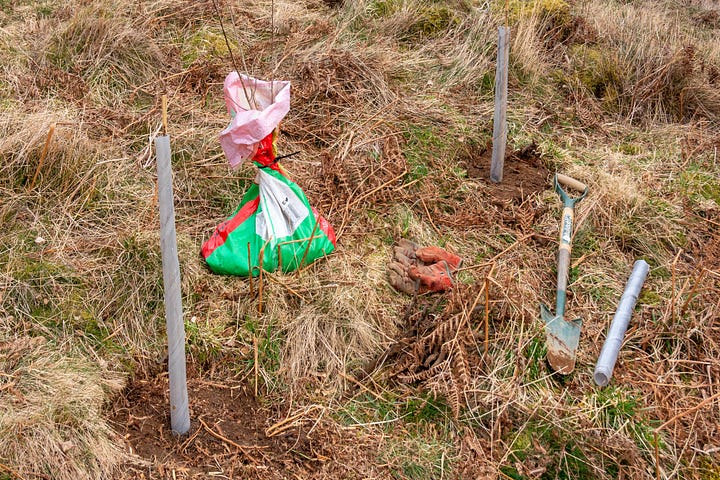
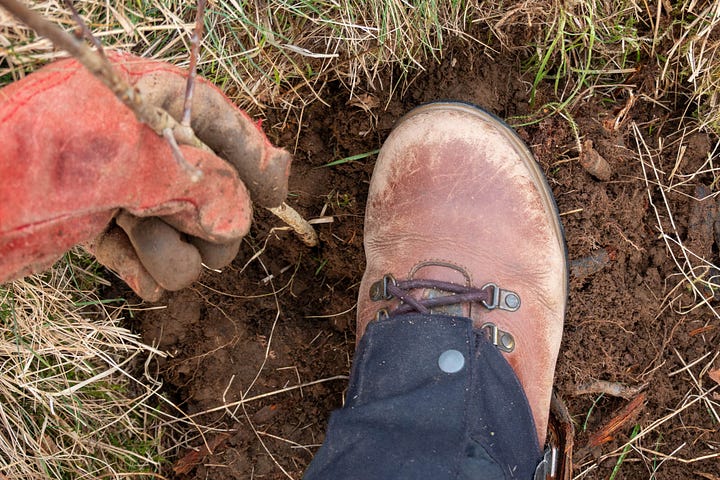


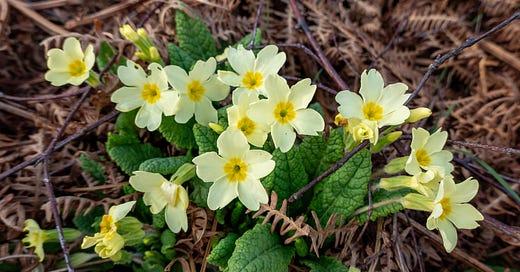



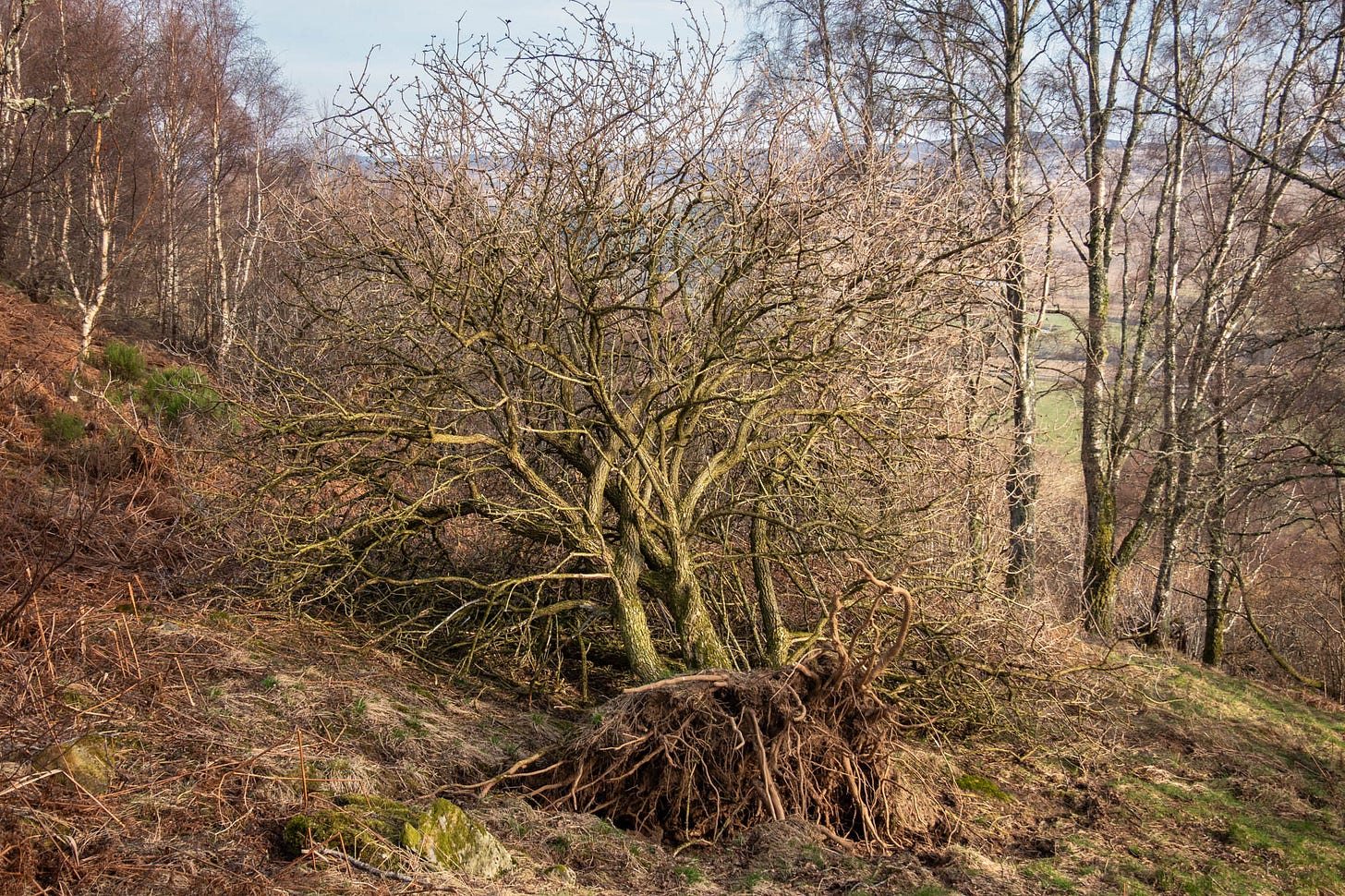

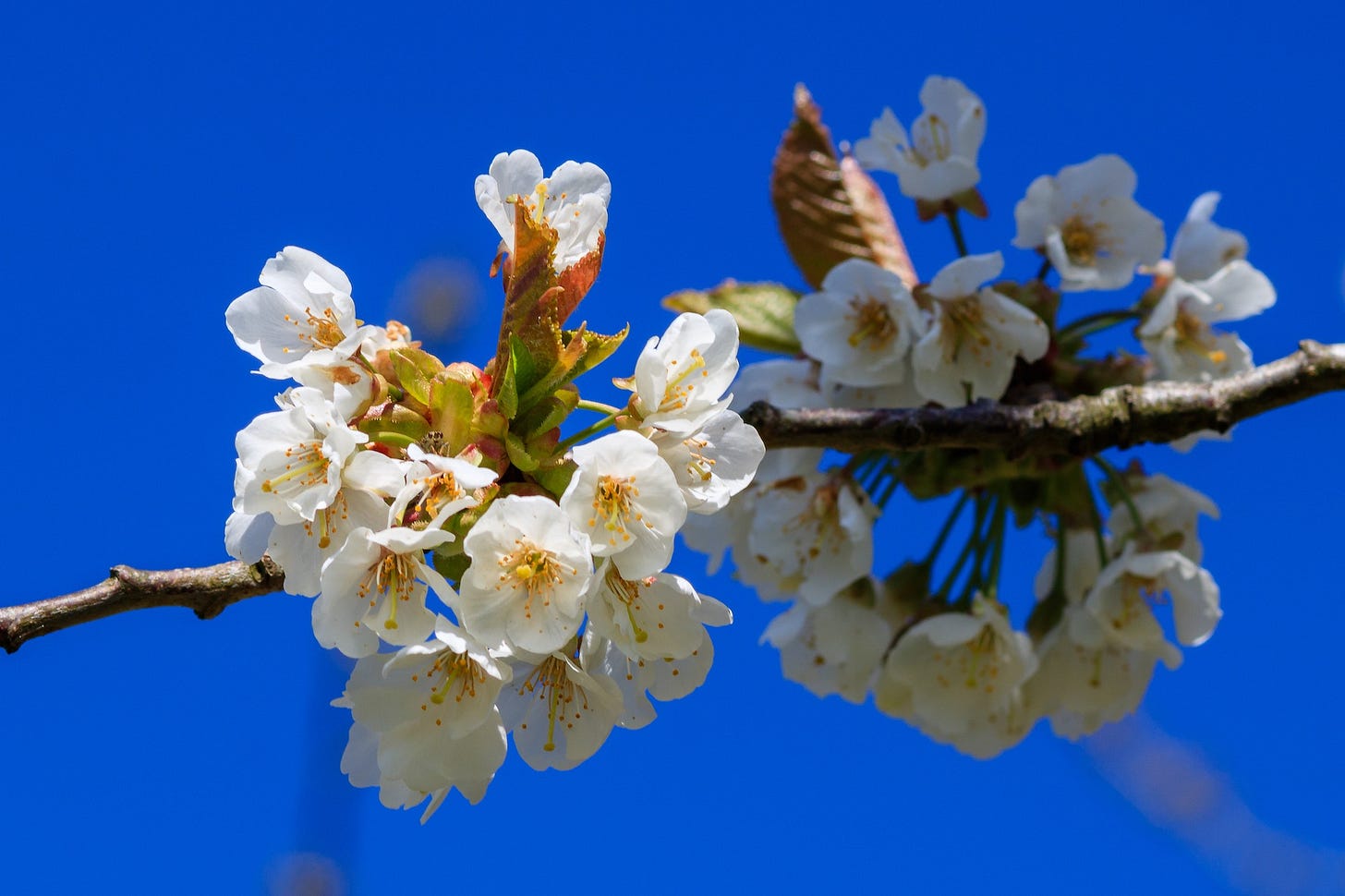
Very interesting post, Felicity. It is always sad when mature trees are lost, especially ones we are particularly fond of.
It will be fascinating watching your gean trees grow, and so satisfying when you get the first blossom :-)
The cycle of life unfolding before your eyes. I am sorry for your losses, but it seems that the land is gaining greatly from your care.